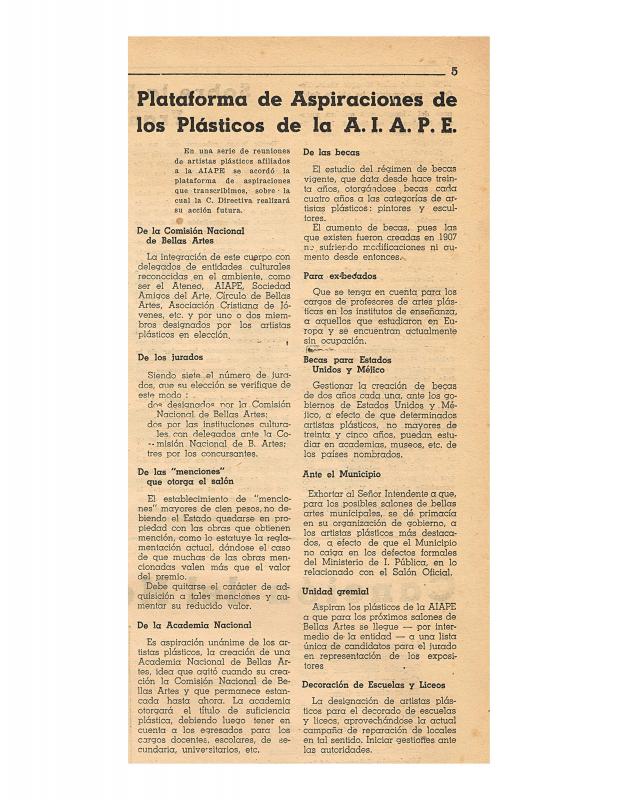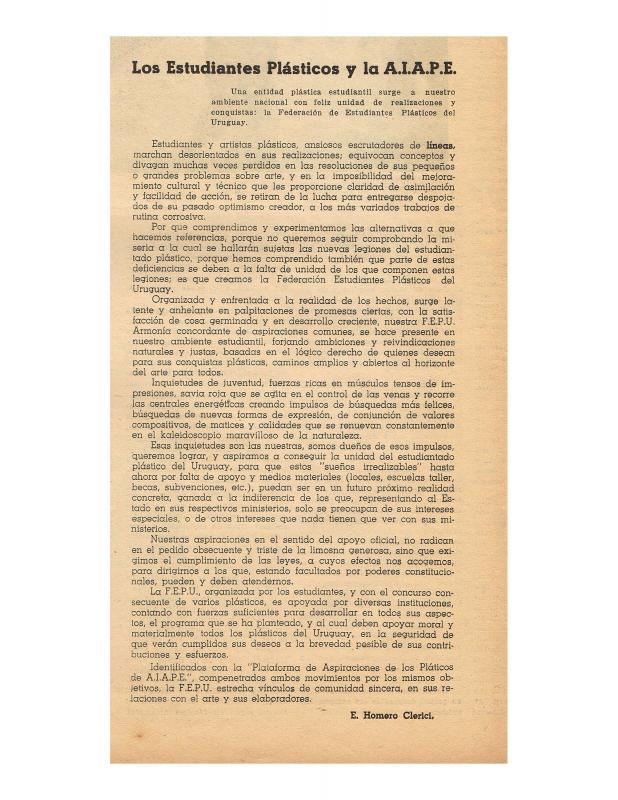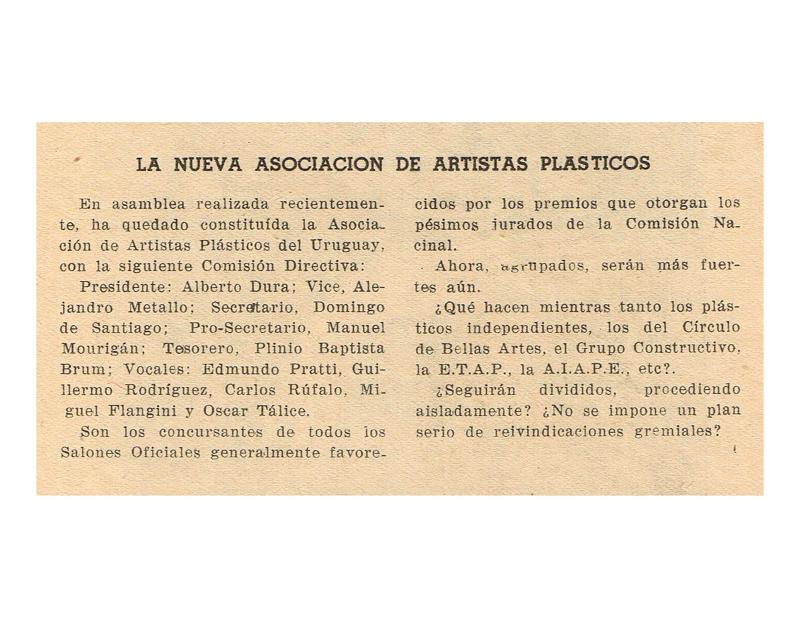The contribution and life of Justino Zavala Muniz (1898−1968) is of great significance and is central to Uruguayan cultural policies from the twenties through the sixties. He was a writer, journalist, lawyer, militant politician, and radical opponent to the coup d’état of 1933, at the hands of Batllismo [a movement created by José Batlle Ordóñez against foreign economic imperialism] and under this democratic political model, socioeconomic and cultural reforms were promoted. In 1944, two years later, the elected senator of the republic would give the speech which the magazine AIAPE transcribed. It was a reflection on the visual arts and its social and educational role in society. It was insisting on the need for the work to be displayed and viewed by all citizens at public venues. This idea of “democratizing” the accessibility of artistic creations was inherited from the nineteenth century, when there was a conviction that art was an educating and “civilizing” element, obviously a construct of citizenship. Zavala Muniz considered the difficulties of the state in giving artistic work an economic value as it would switch the role of the artist to that of a “social worker.” Such aspects brought the debate closer to the long years of activism by the Uruguayan guilds who sought to value the artist through the labor agreements program. Not absent from consideration were the paternalistic and the state view of the Batllismo, according to which, the state must make the transition and effect the protections of the worker. Therefore, the crux of his proposal was dealing with “the artistic salary.” On the other hand, the speech by Zavala Muniz also covered the crisis of looking toward Europe as a place of cultural origins, as at the time, it had suffered from devastation as a result of the great war. His views were aimed at observing Uruguay as a young, singular, and democratic place, which held a reservoir of ideas and a creative cultural impulse for Latin America. [For further reading, please refer to the ICAA digital archive with various texts on the topic by the AIAPE such as the one by its notable editor, Roberto Ibáñez “Plataforma de aspiraciones de los plásticos de la A.I.A.P.E.” (doc. no. 1225398) and “Los estudiantes plásticos y la AIAPE [Agrupación de Intelectuales, Artistas, Periodistas, y Escritores]” (doc. no. 1225286), by Homero Clerici, and “La nueva Asociación de Artistas Plásticos” (doc. no. 1225166), by Gisleno Aguirre.



